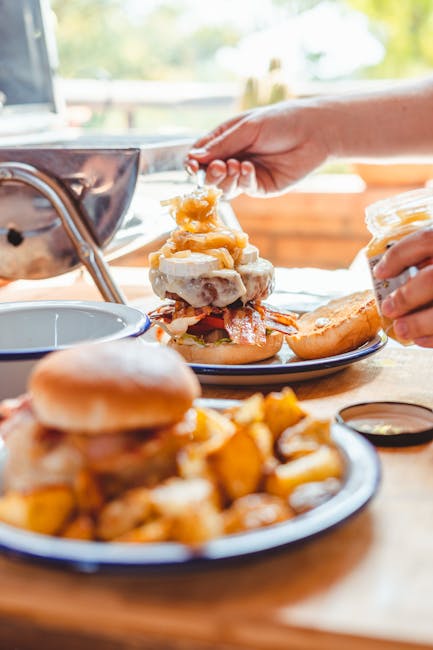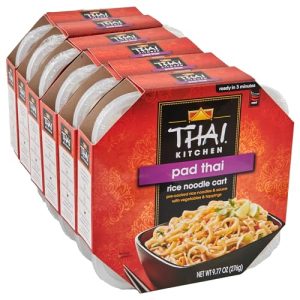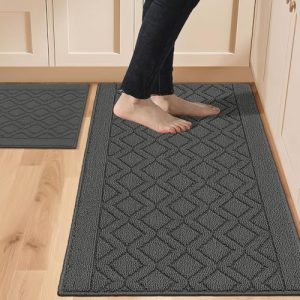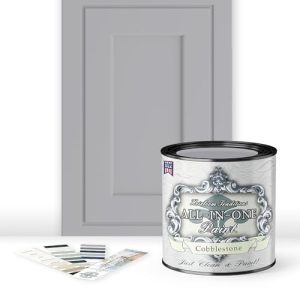Grilling is often seen as an outdoor activity, but what if you could enjoy that same smoky, delicious flavor right in your kitchen? Imagine sizzling your favorite meats, veggies, or even fruits with perfect grill marks and mouthwatering taste—without stepping outside.
You might think it’s tricky or messy, but with the right tips and tricks, grilling indoors can be simple, safe, and incredibly rewarding. Keep reading, and you’ll discover how to transform your kitchen into a grill master’s playground, impress your family and friends, and enjoy amazing meals all year round.
Ready to fire up your indoor grill skills? Let’s get started!
Choosing The Right Grill
Choosing the right grill for your kitchen makes cooking easier and more enjoyable. The right grill fits your space and meets your cooking needs. It should be safe, efficient, and easy to clean.
Types Of Indoor Grills
Indoor grills come in many styles. Each type offers different benefits. Some popular types include:
- Electric grills: Easy to use and clean, no open flame.
- Contact grills: Cook food from both sides at once, like a panini press.
- Stovetop grills: Use your burner, compact and simple.
- Smokeless grills: Designed to reduce smoke for indoor use.
Key Features To Look For
Check for features that improve your grilling experience:
- Adjustable temperature control for better cooking results.
- Non-stick plates to reduce mess and ease cleaning.
- Removable grill plates for easy washing.
- Size and weight that fit your kitchen space.
- Drip tray to catch excess fat and juices.
- Indicator lights to show when the grill is ready.
Safety Considerations
Safety is a top priority when grilling indoors:
- Choose grills with automatic shut-off features.
- Ensure proper ventilation to avoid smoke build-up.
- Keep the grill away from flammable materials.
- Use grills with cool-touch handles to prevent burns.
- Always follow the manufacturer’s safety instructions.
Preparing Your Kitchen Space
Preparing your kitchen space is key before you start grilling indoors. A clean, organized area helps keep cooking safe and efficient. You need enough room to move, place tools, and handle food comfortably. Taking time to set up prevents accidents and improves your grilling experience.
Ventilation Tips
Good ventilation removes smoke and heat fast. Open windows and doors to create airflow. Use an exhaust fan or range hood to pull out smoke. Place a small fan near your cooking area to push air outside. Check that vents are clean and working well before grilling.
Setting Up Your Grill Station
Choose a flat, stable surface for your grill. Keep your grill away from flammable items like curtains or paper towels. Arrange your tools, spices, and ingredients nearby for easy access. Use heatproof mats or trays to protect countertops. Clear the space of clutter to avoid accidents.
Managing Smoke And Odors
Smoke and smells can spread quickly indoors. Place a bowl of vinegar or baking soda near the grill to absorb odors. Light scented candles or use air fresheners after cooking to freshen the air. Clean grill parts regularly to reduce smoke buildup. Always keep a window open during and after grilling.
Selecting Ingredients
Choose fresh, high-quality ingredients for the best grilling results. Pick items that cook well quickly and hold their flavor indoors.
Selecting the right ingredients is key to grilling success in the kitchen. Fresh, quality ingredients make all the difference in flavor and texture. Choosing the right meats, vegetables, and seasonings enhances your indoor grilling experience.Best Meats For Indoor Grilling
Lean cuts of meat work well for indoor grilling. They cook evenly and quickly, reducing smoke. Chicken breasts and thighs are popular choices. For beef lovers, sirloin or flank steak offers great flavor. Pork chops and tenderloins are also excellent for grilling.Vegetables And Alternatives
Grilled vegetables add color and nutrients to your meals. Bell peppers, zucchini, and mushrooms grill well indoors. Slice them evenly for even cooking. Alternatives like tofu and tempeh are great for vegetarians. They soak up flavors and grill nicely.Marinades And Seasonings
Marinades enhance the flavor of meats and vegetables. Mix olive oil, lemon juice, garlic, and herbs for a simple marinade. Let meats marinate for at least 30 minutes. Use spices like paprika, cumin, and pepper for seasoning. They add depth without overpowering the natural taste.Mastering Grill Techniques
Mastering grill techniques in your kitchen transforms simple meals into something extraordinary. It’s not just about placing food on a hot surface; it’s about understanding how heat interacts with your ingredients. This knowledge lets you control flavor, texture, and presentation with confidence.
Preheating And Temperature Control
Preheating your indoor grill is crucial. Give it at least 5 to 10 minutes to reach the right temperature before adding any food. This ensures even cooking and helps prevent sticking.
Temperature control is your best friend. Different foods need different heat levels. For example, steaks do best on high heat to sear quickly, while vegetables prefer medium heat to cook through without burning.
Have you noticed how a grill that’s too cool makes food soggy rather than crispy? Adjusting heat during cooking can change your results dramatically. Don’t be afraid to experiment with your grill’s settings to find the sweet spot.
Grilling Times For Different Foods
Knowing how long to grill different foods is key to avoiding undercooked or overdone meals. Here’s a quick guide:
| Food | Grill Time | Notes |
|---|---|---|
| Chicken breast | 6-8 minutes per side | Cook until internal temp hits 165°F (74°C) |
| Steak (1-inch thick) | 4-5 minutes per side | For medium-rare; adjust for preference |
| Vegetables (bell peppers, zucchini) | 3-4 minutes per side | Cook until tender with slight char |
| Shrimp | 2-3 minutes per side | Turns pink and firm when done |
Have you timed your grilling sessions? Keeping a timer handy helps you avoid guesswork and improves consistency.
Achieving Perfect Grill Marks
Grill marks aren’t just for looks; they add flavor through caramelization. To get those crisp, dark lines, start with a clean, hot grill surface.
Place your food down without moving it for a few minutes. Then rotate it 45 degrees halfway through cooking on each side to create a crosshatch pattern.
Resist the urge to flip too soon or too often. Letting your food develop those marks naturally takes patience but pays off in taste and presentation. What’s your favorite food to showcase those perfect grill lines?
Enhancing Flavor Indoors
Grilling indoors can be just as flavorful as outdoor cooking. It needs the right techniques to bring out smoky, juicy, and rich tastes. Enhancing flavor indoors means using smart tools and methods. These add depth and make your grilled food exciting and tasty.
Using Smoke Flavors
Smoke gives grilled food its classic taste. Since there is no open flame indoors, try these options:
- Use liquid smoke in marinades or sauces for a smoky touch.
- Cook with smoked spices like smoked paprika or chipotle powder.
- Use a stovetop smoker or a smoking gun to add real smoke flavor.
- Grill over wood chips wrapped in foil on a grill pan for subtle smoke.
These tricks bring smoky warmth without needing a big grill or fire.
Tips For Juicy And Tender Results
Indoor grilling can dry out food without care. Follow these tips for juicy meals:
- Marinate your meat to add moisture and flavor.
- Use moderate heat to cook evenly and avoid burning.
- Let meat rest after cooking to keep juices inside.
- Use a meat thermometer to check doneness without guessing.
- Try adding a small pan of water near the grill to keep air moist.
These steps keep your food tender and full of flavor.
Finishing Touches And Sauces
Good sauces and final touches enhance grilled food beautifully. Consider these ideas:
- Brush on glaze or BBQ sauce in the last minutes of grilling.
- Sprinkle fresh herbs like parsley or cilantro for color and taste.
- Serve with dips like garlic mayo or spicy yogurt for extra flavor.
- Add a squeeze of lemon or lime to brighten grilled dishes.
- Use flavored butters to melt on hot food right before serving.
Small details make a big difference in flavor and presentation.
Cleaning And Maintenance
Keeping your indoor grill clean is key to great taste and safety. Dirt and grease build-up can cause bad flavors and even fires. Regular care makes grilling easier and keeps your kitchen fresh. Follow these simple steps for cleaning and maintenance.
Daily Cleaning Tips
- Turn off and unplug the grill before cleaning.
- Use a soft cloth or sponge with warm soapy water.
- Wipe down the grill plates and exterior surfaces.
- Remove crumbs and food bits from drip trays.
- Dry all parts completely to avoid rust.
Deep Cleaning Your Grill
Take apart removable grill plates and trays. Soak them in warm, soapy water for 15-20 minutes. Use a soft brush or sponge to scrub off stuck food. Rinse well and dry all pieces before reassembling. Clean the heating element carefully with a dry cloth. Avoid water contact with electrical parts.
Extending Grill Lifespan
- Clean your grill after every use to prevent buildup.
- Store the grill in a dry place when not in use.
- Check cords and plugs for damage regularly.
- Use grill covers to protect from dust and moisture.
- Follow the manufacturer’s instructions for maintenance.
Frequently Asked Questions
How Do I Grill Indoors Without A Barbecue?
You can use a grill pan or an electric indoor grill. Both provide grill marks and smoky flavor safely inside your kitchen.
What Foods Are Best For Kitchen Grilling?
Chicken breasts, steaks, vegetables, and seafood grill well indoors. Choose thinner cuts for even cooking and quick grilling.
How To Prevent Smoke When Grilling Inside?
Use a grill pan with good ventilation. Cook on medium heat and keep a window or exhaust fan open.
Can I Use My Oven To Grill Food?
Yes, use the oven’s broiler setting to mimic grilling. Place food close to the heat source for best results.
Conclusion
Grilling in the kitchen is simple and fun. Use the right tools and follow safety tips. Try different foods and flavors to enjoy tasty meals. Practice makes your grilling better each time. Cooking indoors means you can grill anytime. Stay patient and watch your food closely.
Soon, you will enjoy delicious grilled dishes at home. Keep experimenting and have fun with your kitchen grill!

Sophie Hartwell is the founder of KitchenQuik.com, where she shares kitchen tips, smart cooking hacks, and the best product picks to make everyday cooking easier and more enjoyable.




